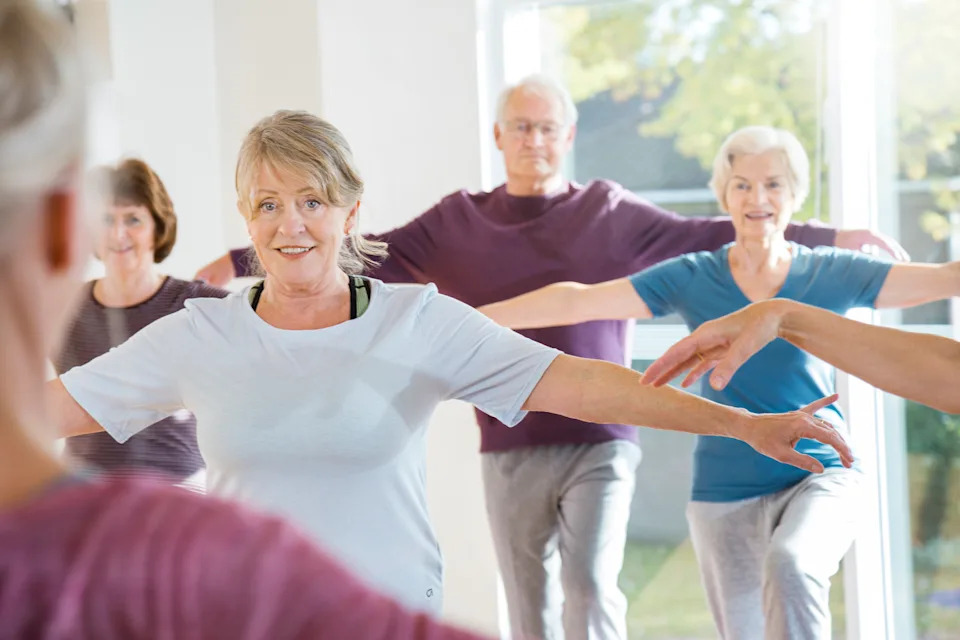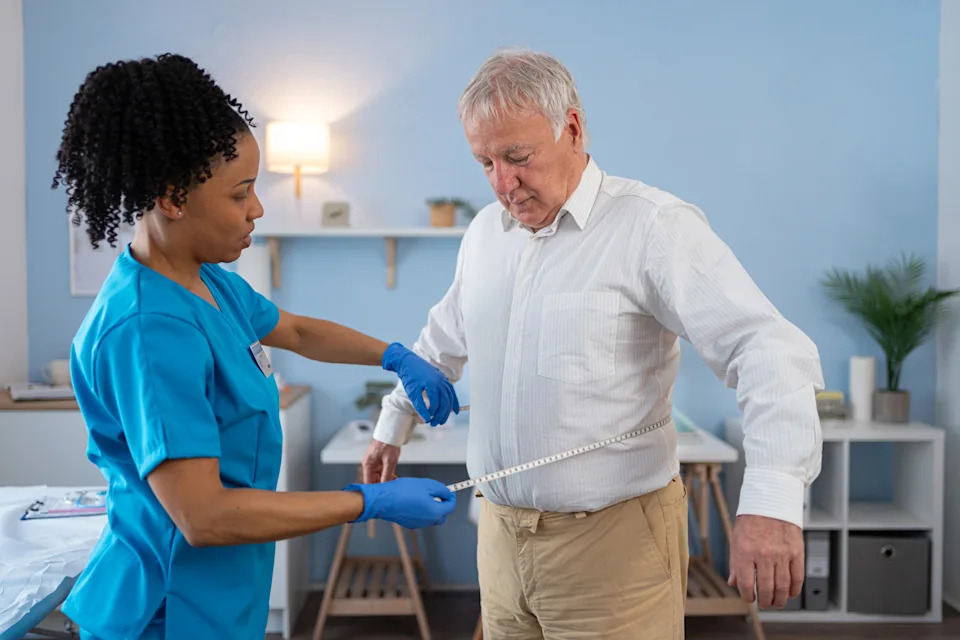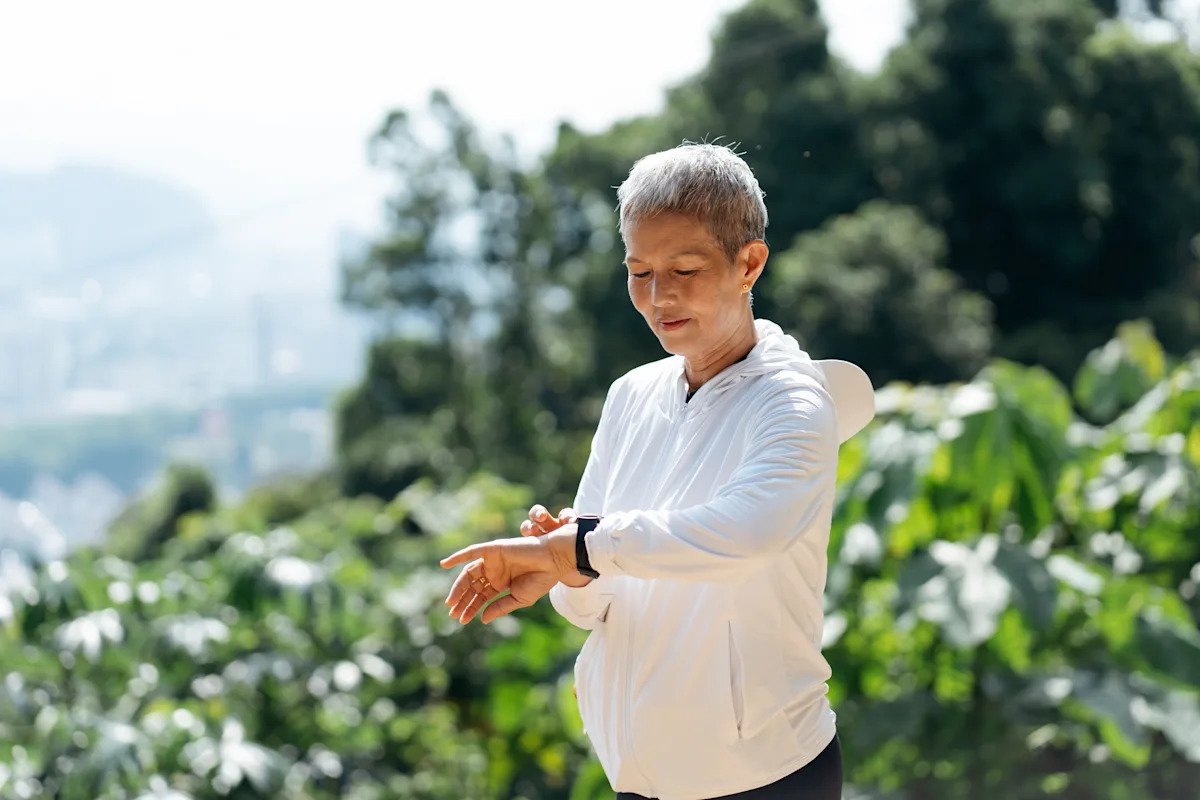Smoke less. Move more. Eat well. People often talk about the secrets of living a long life, but increasingly, the focus has shifted from basic ageing to achieving what’s known as longevity – the science of making sure we can enjoy those later years free from pain and health complications.
If you’re entering your 60s, you might be wondering just how fit and healthy you actually are, and if your lifestyle is currently on track to help you age in the best way possible.
Besides shelling out for expensive full-body AI scans, experts say you can get a clear picture of your health in this decade by taking a handful of simple at-home tests.
Being able to pass these tests not only reflects your current fitness level but also predicts your independence and risk of injury in the future.
Curious to know what they are? We quizzed experts to put together a simple MOT for your body, so you can make small changes now to increase the chances of living the life you want later down the line.
1. Being able to climb a flight of stairs without getting winded
Strong cardiovascular fitness allows your body to move your blood efficiently, decreasing your risk of major health issues like heart attack and stroke. However, as people get older, they tend to live more sedentary lives, with fewer opportunities to naturally build or maintain endurance.
One of the most reliable ways to check your cardiovascular health is by measuring your VO₂ Max, which is typically done using a fitness tracker like a Garmin or Apple Watch. But even without strapping on fancy fitness wearables, you can still get a quick insight into your heart health with a simple stair test.
“In clinical and rehabilitation practice, several simple, validated functional assessments can help gauge whether a person’s physical capacity aligns with healthy-ageing norms,” explains Dr Lewis Raiman, a Doctify-rated sport and exercise medicine doctor.
“For example, being able to climb a flight of stairs without excessive breathlessness can indicate you have adequate cardiorespiratory function, which is consistent with a lower risk of cardiovascular disease and death.”
The fix: Reassuringly, cardio endurance can be built over time through gentle exercise like walking, cycling or swimming. Even just 20 minutes a day can have a powerful impact on your long-term heart health.
2. Being able to balance on one leg for 10 seconds
Test your balance by standing on one leg for 10 seconds. (Getty Images)
“A large cohort study published in the British Journal of Sports Medicine suggests that the ability to stand on one leg for 10 seconds or more is associated with lower all-cause mortality,” explains Raiman.
While these findings are observational, they highlight balance as an overlooked marker of our health as we move through the decades. In fact, according to NHS figures, around one in three people over the age of 65 have at least one fall a year.
To put your balance to the test, try standing near a sturdy wall and lifting one foot off the ground, trying to balance on the other leg for as long as possible. If you can balance for 10 seconds without wobbling or putting your foot down, you’re considered within a healthy range.
The fix: Practices like yoga, tai chi and Pilates can help improve your balance and postural control, while exercises like single-leg stands, heel-to-toe walking or standing on one leg while brushing your teeth can help retrain your stability.
3. Being able to stand up from a chair five times in a row
As you age, lower-body strength becomes one of the most important predictors of your long-term mobility. Yet it’s something that’s often massively overlooked, until getting out of a chair becomes much harder than it used to be.
“One of the simplest and most effective ways to test your lower-limb strength and coordination is the ‘Five-Times Sit-to-Stand Test’ (5xSTS),” notes Raiman.
“This practical test measures how quickly you can rise from a chair and sit back down five times in a row, without using your arms for support. During, you’re challenging major muscle groups in your legs and core, while also testing your balance and motor control.
“In healthy adults aged around 60, a completion time of roughly under 12 seconds is generally associated with good mobility and reduced frailty risk, though results can vary by your individual health status,” he caveats.
The fix: Lower-body exercises like bodyweight squats, step-ups, wall sits or resistance band work can strengthen the muscles used in the sit-to-stand test. Even just committing to practising a few squat sets while the kettle boils can lead to improvements in your ability to rise from a chair over time.
4. Having a waist circumference in a healthy range
The size of your waist can be a good indication of your overall health. (Getty Images)
You’ve probably heard of BMI as a way to assess weight-related health risks, but putting a tape measure around your waist might be a more accurate indicator, as it reflects how much visceral fat you’re carrying.
Stored around the organs, this type of fat is strongly linked to metabolic syndrome, type 2 diabetes and heart disease – even in people with a normal weight on the scale.
“For men, a waist size below 94 cm (37 inches) and for women below 80 cm (31.5 inches) is considered low risk,” says nutritionist Rob Hobson. “Anything above that increases your risk for cardiovascular and metabolic conditions, regardless of your overall weight.”
The fix: You can trim your waist size at any age through tweaks to your diet and lifestyle. Hobson recommends pairing a consistent exercise routine with a diet that focuses on whole foods, with plenty of vegetables, lean protein, healthy fats and minimally processed carbohydrates like oats, quinoa, legumes and sweet potatoes.
5. Passing the six-minute walking test
Think of fitness tests and your mind might land on the brutal bleep tests from your school years or more modern challenges like Hyrox. But you don’t need to be sprinting back and forth on a tennis pitch to measure how healthy you are.
“In clinical and rehabilitation settings, the six-minute walk test (6MWT) is widely used to assess a person’s ability to sustain movement over time,” says Raiman. The test involves walking as far as possible in six minutes, ideally on a flat surface, and measuring the distance covered.
“A distance of 500 metres or more is typically considered a sign of preserved aerobic capacity and lower mortality risk in healthy older adults, though exact benchmarks vary by age, sex and medical history,” he adds. “It gives us a safe, low-tech snapshot of how well someone is functioning day-to-day.”
The fix: If walking 500 metres without stopping feels out of reach, don’t worry, as walking endurance is one of the easiest things to build over time. Start with short, consistent walks around your local neighbourhood, gradually increasing the duration over time and including a few hills or short intervals to build stamina.
Read more on health:
